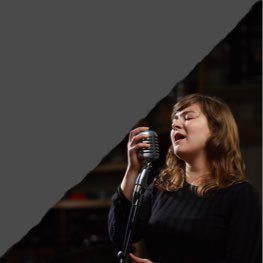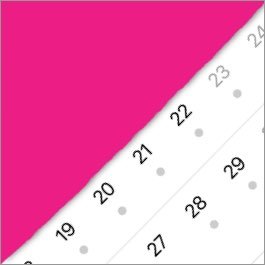IMPROVISING IN AN R'N'B STYLE
By Paul Trippett – musician, teacher and musical director
R‘n’B is a broadly defined genre, known for its sophisticated production techniques, virtuosic singing and commercial focus. It’s not to be confused with rhythm and blues, also sometimes known as R‘n’B, contemporary R‘n’B was first recognised by the Grammy Awards for best R‘n’B Album in 1995.
In the early 1980s, pop music contained elements of soul, disco and funk, but the hip hop scene was quite separate. Producer Teddy Riley was a key figure in starting to blend pop with elements of hip hop, in a style that came to be called new jack swing. Vocals would be sung over hip hop grooves, commonly using a drum machine rather than live drums. The influence of hip hop did not filter into the mainstream overnight. Other R‘n’B artists were producing a much smoother style, making significant use of saxophone and a rich vocal style reminiscent of soul. However, by the late 90s the use of electronic instruments with increasingly slick production in R‘n’B, created a sound that some found to be too synthetic. These artists wanted to use modern production techniques to emphasise musicianship rather than iron it out. This neo-soul movement drew influence from classic soul, funk, hip hop and jazz.
In the early part of this century, urban music was gaining in popularity. As Chris Molanphy wrote in the Village Voice, ‘By the early 2000s, urban music was pop music… This early-noughts period was the all-time peak for R‘n’B and hip-hop on the Hot 100, and hence on Top 40 radio.’ With many artists achieving success in both hip hop and R‘n’B charts, the lines between the genres was becoming increasingly blurred.
The increasing sophistication of production techniques since the 1990s has been a key factor in the development of R‘n’B. The use of autotune, vocal tracking and compression are not new, but the skilled use of these techniques today helps to create an aesthetic of enhanced reality that works well when heard through different listening devices, and the importance of the role of ‘producer’ is increasingly reflected in their public profiles: Pharrell Williams is known as much for his back-room production and writing, as he is as a performer.
Improvising in an R’n’B style
Many of the instruments on recorded R‘n’B are programmed or quantized, and when musicians are employed, this precision makes them some of the most in demand session players available. So, when playing R‘n’B, we need to be as accurate and as consistent as possible. Fortunately, there is readily available software that can slow down recordings without altering the pitch. This kind of study is a great way to get under the skin of a groove, which is an essential part of developing your own musical language. Rhythm section players should be aware that finding the right place to put a fill is as important as its content. When there are instrumental solos, they should serve the arrangement rather than be about telling an individual story.
For singers working on melisma (the singing of a single syllable while moving between different notes), checking out recorded examples (ideally by slowing them down) is very important, and practising embellishments in advance is essential. Choose the moments to add a melisma carefully, and make sure you are clear on the harmony and what will work over it. Practice the melisma slowly, separating each note and focusing on accuracy of tuning. Speed it up gradually, taking care to ensure the notes are clearly articulated and the stresses are correct.
Example improvising videos
Watch videos with session musician and Rock & Pop examiner JJ Wheeler, and session musicians Sam Edgington and Leigh Martyn Thomas for tips and ideas on how to improvise in a R'n'B style:
Influential artists
The success of Janet Jackson’s third album Control, released in 1986, was significant in its fusion of rap with funk, disco and soul, making use of synthetic drum sounds. Michael Jackson’s 1991 album Dangerous was produced by Teddy Riley, who was key to the development of new jack swing.
The hip hop influence was much less present in the smooth style of many other R‘n’B artists of the late 80s and early 90s, such as Babyface. The use of saxophone and rich vocal style was reminiscent of soul. In 1982, Whitney Houston’s The Bodyguard: Original Soundtrack Albumsold over 40 million copies worldwide. It is, to date, the best ever selling soundtrack. R. Kelly was well versed in the hip hop grooves, but his 1996 release ‘I Believe I Can Fly’ was a smoother ballad and is his biggest hit to date. He has been one of the most prolific writers and producers in the industry, and is known by the nickname of ‘The King of R‘n’B’.
The neo-soul movement came to prominence in the late 90s, but many associated with it had been making music in that style for some time. D’Angelo, and Lauryn Hill were very successful then, but popularity waned in the 2000s, in part due to the artists disliking the way their music was being marketed and the pressures this put them under.
The increasing influence of urban music in the 00s can be heard in much of the R‘n’B being made in that decade. Alicia Keys, Usher, Mariah Carey, Rihanna and Beyoncé were all hugely popular in this decade. In her 2003 hit ‘Crazy In Love’, the urban influence is very clear with the drum grooves and rap from Jay-Z, as well as the horn and vocal parts strongly reminiscent of soul. The vocal arrangement is slick, with parts of the lead line richly harmonized and virtuosic melismas in the choruses. This enduring hit is a classic of the genre.
R'n'B Spotify playlist
We've pulled together a playlist of R'n'B songs that appear on our Rock & Pop 2018 syllabus as well as other great R'n'B songs for further inspiration and ideas. Follow our Spotify profile and playlists to easily find the playlists whenever you want to have a listen.
About Paul Trippet
Paul Trippet is a professional bassist and double bassist who studied music at the Royal Academy and University of Edinburgh. He is a teacher, an ensemble and big band director, and a leader of improvisation and song writing workshops. Paul is an active member of the UK jazz scene and has also toured the world with big bands and shows, including The Glen Miller Tribute Orchestra, The Memphis Belle Swing Orchestra, and The Kings of Swing.







